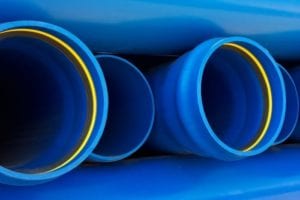Looking back at history 100 years ago, the year 1913 seemed to be an important year for innovation and inventions. The car had just been put into production, the airplane was just invented, the telephone was still fairly new, and there were still people without electricity. During this year, however, the first patent was awarded for the polymerization of vinyl chloride (PVC) as we have come to know it today.
“PVC is one of the oldest synthetic materials with the longest history in industrial production”, says Bezuidenhout, CEO of the Southern African Vinyls Association (SAVA). Early development and uses of PVC Although PVC was accidentally discovered by researchers on two earlier occasions (1838 and again 1872) it was the German inventor Friedrich Heinrich August Klatte who took out a patent on PVC in 1913. The material was initially difficult to work with and no one mastered the challenge of commercial applications.A few years later all of this changed after an industrial scientist, Waldo Semon, developed a synthetic replacement for the increasingly costly natural rubber, using PVC. Semon continued to experiment with polyvinyl chloride and came up with the idea of using the material as a water resistant coating for fabrics. Despite the financial recession that had hit America hard at the time, sales took off quickly with a rapidly expanding product range. Demand accelerated again during the Second World War, when PVC was used to replace traditional material to insulate wiring on military ships. During the 1950’s many more companies started to produce PVC and volumes increased dramatically around the world. Developers quickly found further, innovative uses through the decades that followed, and they refined methods to enhance PVC’s durability. Wide application value
“Since its first application, PVC has continued to have a dramatic and lasting impact on modern life as we know it today. It is therefore little wonder that PVC is the third largest-selling commodity plastic in the world after polyethylene and polypropylene. Its cost, excellent durability, resistance to light and corrosion and processability, has made PVC the material of choice for dozens of industries such as building and construction, healthcare, IT, transport, and textiles”, Delanie says.
Taking PVC into the future However, like any successful brand or product that has stood the test of time, PVC does not rest on its laurels, but continues to grow and evolve to be in step with modern demands. “When it was first developed, issues such as recyclability and the responsible use of additives were not important. During recent years, however, vinyl has successfully reinvented itself in order to address the historical environmental concerns of PVC and improve its environmental performance”, Delanie says. Taking these issues to heart, local manufacturers of vinyl products belonging to SAVA have all committed themselves to the responsible and sustainable use of additives, the implementation of a sustainable recycling programme and the promotion of a healthy vinyls industry through the association’s Product Stewardship Programme (PSP). “We are looking forward to what the next 100 years will hold for PVC. We are proud of the long and illustrious history of this product, and the many applications that continue to be developed using vinyl on a daily basis. We raise our glasses to salute and toast a centenarian that is fit, healthy and strong and look forward to an exciting and illustrious future filled with innovation and invention.”







